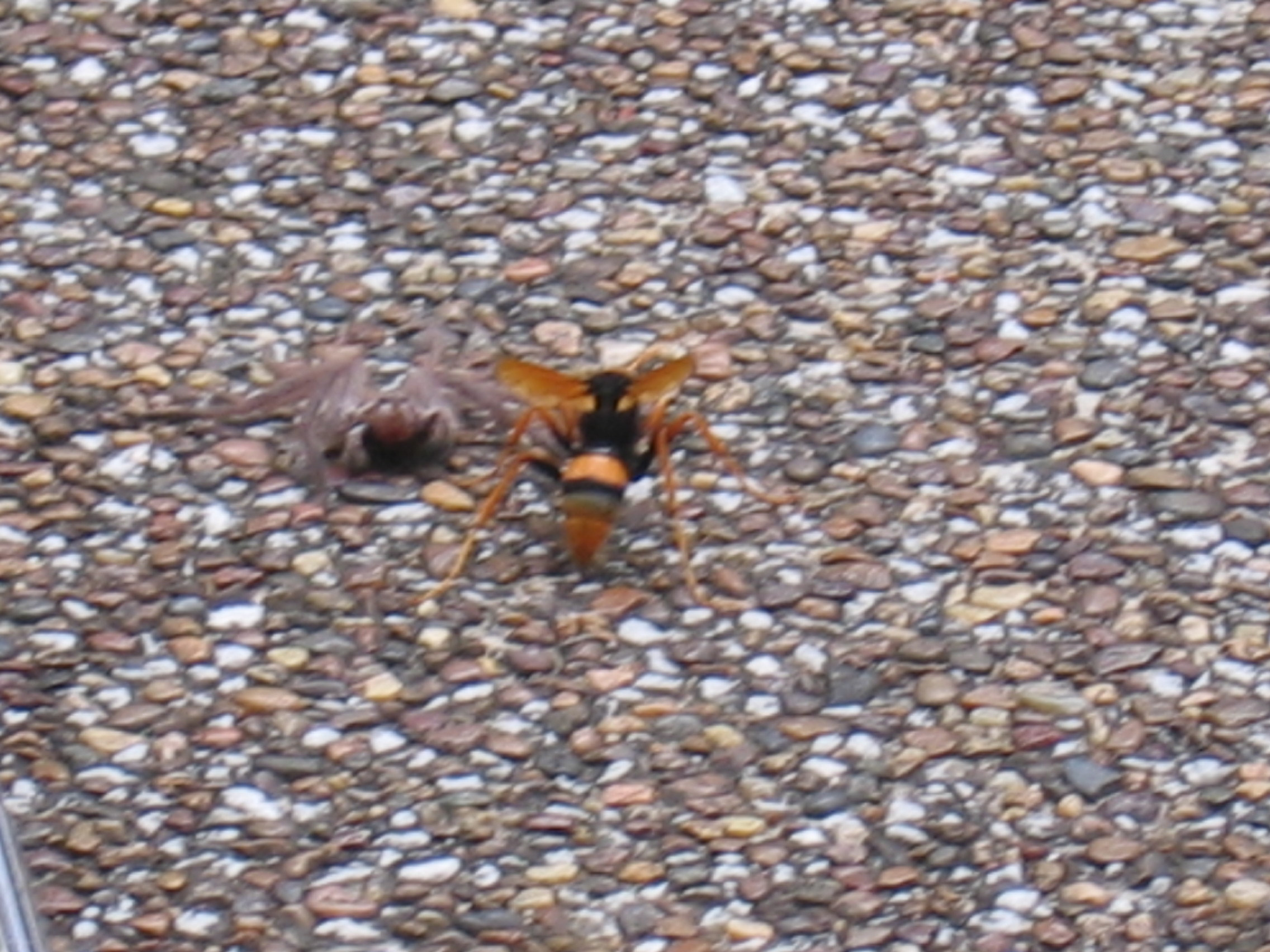Fasinating Wasps ^^ Luv'um
Spider wasp

Wasps in the family Pompilidae are commonly called spider wasps (in South America, species may be referred to colloquially as marabunta or marimbondo, though these names can be generally applied to any very large stinging wasps). The family is cosmopolitan, with some 4,200 species in 4 subfamilies.[1] All species are solitary, and most capture and paralyze prey, though members of the subfamily Ceropalinae are cleptoparasites of other pompilids, or ectoparasitoids of living spiders.
Spider wasps are best distinguished from other vespoid wasps in having a transverse groove dividing the mesopleuron (a region of the thorax) into halves. Larvae can also be identified by physical examination. Females are often larger than the males, with coloring and wing appearance varying greatly among the many species, though black is the most common color, with contrasting aposematic markings of orange, red, yellow, or white also being fairly common.
Spider wasps are long-legged, solitary wasps that use a single spider as a host for feeding their larvae. They paralyze the spider with a venomous stinger. Once paralyzed, the spider is dragged to where a nest will be built – some wasps having already made a nest.
Wasp dragging spider to its nest
A single egg is laid on the abdomen of the spider, and the nest – or burrow – is closed.

The size of the host can influence whether the wasp will lay an egg that will develop as a male, or an egg that will develop into a female – larger prey yielding the (larger) females.[2] A complex set of adult behavior can then occur, such as spreading dirt or inspecting the area, leaving the nest site inconspicuous. When the wasp larva hatches it begins to feed on the still-living spider. After consuming the edible parts of the spider, the larva spins a silk cocoon and pupates – usually emerging as an adult the next summer. Some ceropalines lay the egg on a still-active spider, where it feeds externally on hemolymph. In time, that spider will die, and the mature wasp larva will then pupate.
Not to metion a good Alliie against Deadly Spiders B)
I always loved to watch Nature programs and study Animals XD in fact one of my fave shows is Meerkat Manor.
So I hope you've enjoyed or at least your curiousty satisfied about on of these amazing insects that I have shown for you who may or may not of known about them until know. Feel free to talk about your favorite Arthropods, Aracnids and many of cool creatures if you'd like ^^


16 Comments
Recommended Comments